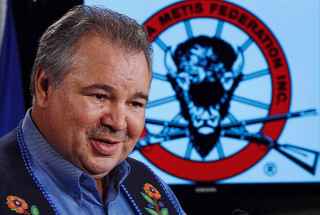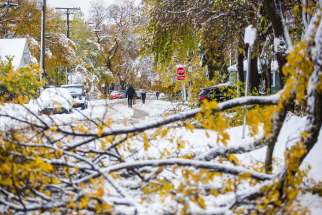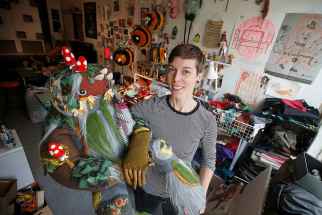Picking up the pieces The loss of trees due to the storm was devastating. So what's next?
Read this article for free:
or
Already have an account? Log in here »
To continue reading, please subscribe:
Monthly Digital Subscription
$0 for the first 4 weeks*
- Enjoy unlimited reading on winnipegfreepress.com
- Read the E-Edition, our digital replica newspaper
- Access News Break, our award-winning app
- Play interactive puzzles
*No charge for 4 weeks then price increases to the regular rate of $19.00 plus GST every four weeks. Offer available to new and qualified returning subscribers only. Cancel any time.
Monthly Digital Subscription
$4.75/week*
- Enjoy unlimited reading on winnipegfreepress.com
- Read the E-Edition, our digital replica newspaper
- Access News Break, our award-winning app
- Play interactive puzzles
*Billed as $19 plus GST every four weeks. Cancel any time.
To continue reading, please subscribe:
Add Free Press access to your Brandon Sun subscription for only an additional
$1 for the first 4 weeks*
*Your next subscription payment will increase by $1.00 and you will be charged $16.99 plus GST for four weeks. After four weeks, your payment will increase to $23.99 plus GST every four weeks.
Read unlimited articles for free today:
or
Already have an account? Log in here »
Hey there, time traveller!
This article was published 24/10/2019 (2240 days ago), so information in it may no longer be current.
I drove into Winnipeg on Oct. 13, detouring around tree branches loaded with green and yellow leaves that had spilled into the road, my ears filling with the rasp of chainsaws.
It was three days after a Colorado low produced an unseasonable storm that shut down most of southern Manitoba. Heavy wet snow and high winds, combined with the fact that most trees were still laden with green leaves, meant that branches were sheared off, that trees toppled. Trees were damaged on nearly every street in Winnipeg, and as they fell, knocked down power lines and snapped utility poles.
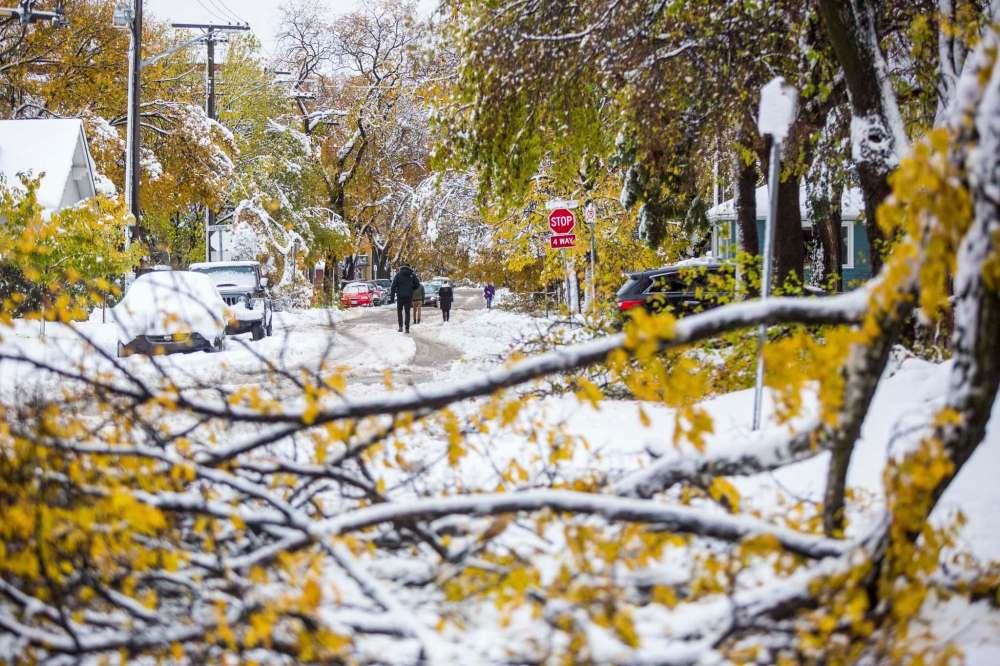
Manitoba Hydro received 266,000 outage calls in the week following the storm. Large swaths of Winnipeg, Selkirk and Steinbach were without power for days at a time and more than 100 transmission structures and 3,600 wooden utility poles in the Dauphin, Interlake and Portage regions were destroyed.
And I’d missed it all, spending those days six hours south in Morris, Minn., at the Prairie Gate Literary Festival.
People took to social media. They complained about posting in the dark, about being stranded, wet and cold.
But mostly, they mourned the trees they had lost, on public and private property.

“It was like watching a slow-motion car crash,” Wolseley resident Erna Buffie said. “With each passing hour, you could see the situation getting worse and worse. Across the street from us, one heavily leafed tree, probably around 10 years old, had its entire canopy bent to the ground by the weight of the snow. And finally it just snapped. It was just heartbreaking to watch.
“And then to find out that we’d lost 30,000 trees in one fell swoop? It made me feel sick. Slow attrition is one thing. Slaughter and maiming is just too painful.”
Stranded in the U.S., the highways between Fargo and Winnipeg closed, I’d felt so weird and sad, like a relative was dying and I couldn’t make one last visit. Ironically, I was talking about Winnipeg’s urban forest as the trees broke, as they fell.
● ● ●
MOST people remember the Flood of the Century in April 1997, which saw the Red River crest at 24.5 feet.
I was in Halifax completing my journalism degree that spring. I sat on my couch and watched the news, which showed a wall of silty river water approaching the city.
I knew my father’s house on Kingston Crescent and my mother’s house on Mager Drive West, both in St. Vital on the river, were likely to be affected. And I couldn’t get a hold of my dad, who’d been evacuated but hadn’t told me. I called over and over, listening to the phone ring in his house, which I imagined to be sloshing with water.
I’d never felt so far from home.
In 1998, I was in Seoul, South Korea, teaching English with my sister Gillian.
And then we got a call from my mother, who wanted to let us know that my paternal grandmother, the one who’d cared for us when we were small, who I was named for, was dying. In all the hubbub, my father had forgotten to call.
We couldn’t go home. We were halfway across the world and in the middle of our teaching contracts. Granny had been sick for a long time, so her death wasn’t entirely unexpected, but it was so very strange not being at her funeral.
.jpg?w=1000)
If you combine these two catastrophes, one provincial, one personal, you’ll have a sense of how I felt about what people are calling “Snowtober.”
Winnipeg is my home. And I’ve come to see the trees in Winnpeg’s urban forest as inhabitants of the city just as much as people are. What’s more, I think of the trees as relatives.
And during the storm, my friends and family, my human and non-human relations, were suffering.
● ● ●
“SADNESS, distress, despair, anger, fear, helplessness, hopelessness and stress.”
In their 2018 paper for Nature Climate Change, Labrador- and Perth, Australia-based researchers Ashlee Cunsolo and Neville R. Ellis list some of the effects of ecological grief, but it’s worth defining it:
“The grief felt in relation to experienced or anticipated ecological losses, including the loss of species, ecosystems and meaningful landscapes due to acute or chronic environmental change.”
A related term is “solastalgia,” which was coined in 2003 by Australian researcher Glenn Albrecht.
“As humans have become an increasingly urbanized species, threats to mental health and well-being come from both negatively perceived changes to urban settings and from changes to the non-urban environment,” Albrecht writes in his 2007 landmark article on the subject.
Albrecht makes a distinction between acute stressors such as wars or natural disasters, which often lead to post-traumatic stress disorder, and chronic ones, such as drought or changes to the landscape caused by hydroelectric dams or mining.
He also makes the distinction between nostalgia, which is felt by people displaced from their homes, and solastalgia, where people feel place-based distress while in their home.
While we can’t be sure that our unseasonable storm — and feelings of loss and grief that followed — is the product of climate change, what we’re feeling as residents of a treed city is definitely a relation of ecological grief and solastalgia.
Most people know that an urban forest provides environmental benefits to city dwellers, including energy savings, improving air quality, sequestering carbon and helping to manage storm water. But what they don’t realize is that trees are also a vital component in improving public health, most notably mental health.
Studies have shown that access to green space around people’s homes results in lower levels of the stress hormone cortisol, as well as reduced loneliness and an increased sense of community.
But how do we cope when the urban forest, the place we go for respite, is threatened?
● ● ●
NATALIE Hasell, a warning preparedness meteorologist with Environment and Climate Change Canada, describes what she felt before the storm even arrived as dread.
“As forecasters, we see these things coming,” Hasell said. “And we’d already been communicating with our partners in emergency and disaster management and eventually as well talking to media about the forecast and about what we were thinking could happen. And we were very concerned about the leaves still being on the trees. Full foliage leads to what we saw, what actually happened, where many, many branches were broken, trees were damaged, some trees entirely toppled.
“And I was very saddened to see that pretty much every street in my neighbourhood fell victim to this, was affected by this. At least a tree on every single street in my neighbourhood was damaged, broken or toppled.”
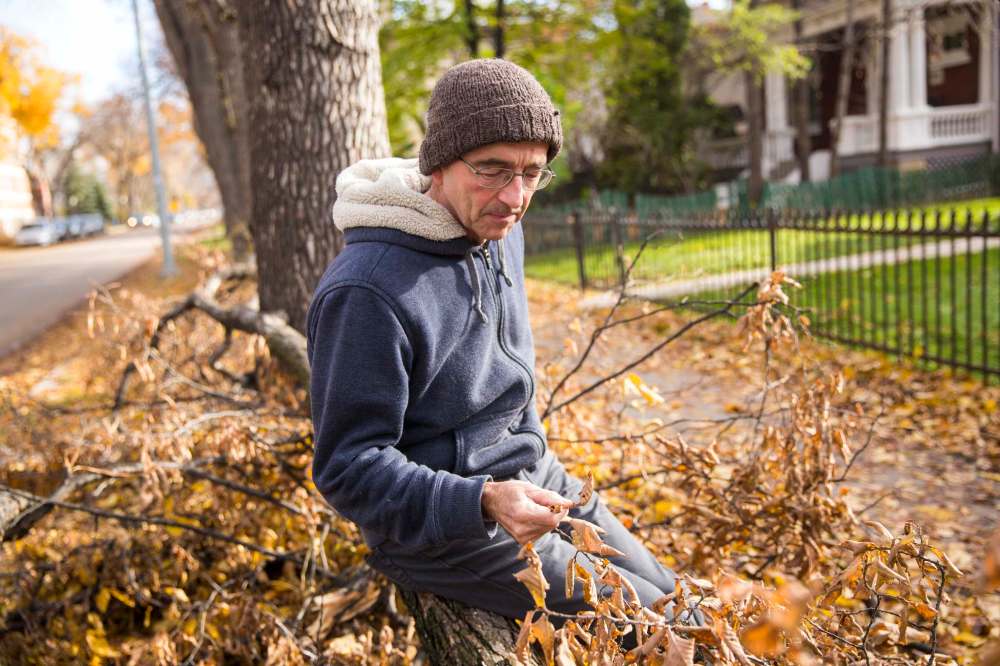
Though he’s not an arborist, University of Winnipeg ecologist Andrew Park noticed certain trees, including ash, silver maple and cherry, seem to have taken more damage from the storm than elm and cottonwood. He also noticed healthy trees that still had leaves on them took more damage than those that were already dead or defoliated.
“I think the first reaction I had, when I went out in the morning after it all happened, was shock, seeing just how much damage there was,” Park says.
And while he didn’t lose any of the trees on his property, Park is mourning some of the trees he’d gotten to know in his neighbourhood.
“There’s a silver maple down my street which was just wrecked. It was a really nice youngish tree and it was potentially going to be a big boulevard tree. It lost a major lateral branch that was literally ripped away from the trunk. It didn’t fall neatly and so part of the trunk was weakened as well. I would guess that it will not survive in the long term, that it might have to be taken out for safety reasons.
“I liked that tree.”
● ● ●
AS the director of the award-winning Nature of Things documentary Smarty Plants: Uncovering the Secret World of Plant Behaviour and chairwoman of the Wolseley Residents Association’s green space committee, Buffie is used to being an advocate for the trees.
“I think people are feeling a combination of things — grief, obviously, because of the huge losses, but they’re also feeling frustrated and overwhelmed by the burden of dealing with the debris. But true to form, people in Wolseley are getting together to share the burden and the cost.”
This past spring, the WRA held a meeting that they called the Tree Town Hall.
At that meeting, they shared the “good news” — only 17 per cent of the trees in Wolseley are ashes, unlike the rest of the city, where it sits around 30 per cent.
That’s a problem because Winnipeg’s ashes are being targeted by lethal pests such as the emerald ash borer and cottony ash psyllid.
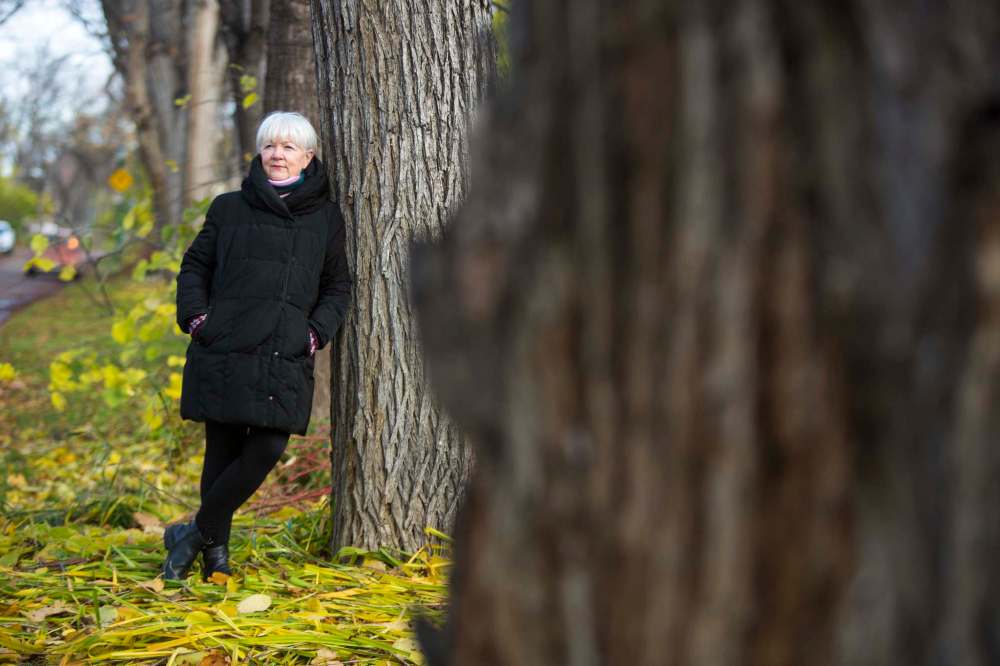
“And I think that’s why the grief people are experiencing as a result of the storm damage is so deep,” Buffie said. “People know that the losses we’ve experienced come in the context of the almost certain decimation of our ash canopy, and the slow but steady loss of our elms. So the grief is exponentially greater.”
How we work through that grief is what’s important to Buffie.
“If there was ever a time for us to take action, a time to plant trees on every square foot of land available — public and private — it’s now,” she says. “We need to harness our grief and act to expand and protect a new, more biodiverse urban forest. And we need to demand that our governments allocate sufficient funds to get it done.”
● ● ●
IT took less than a week for the snow to disappear, but the City of Winnipeg says it will take a year to clean away all the debris and five years to replant all the trees that were lost.
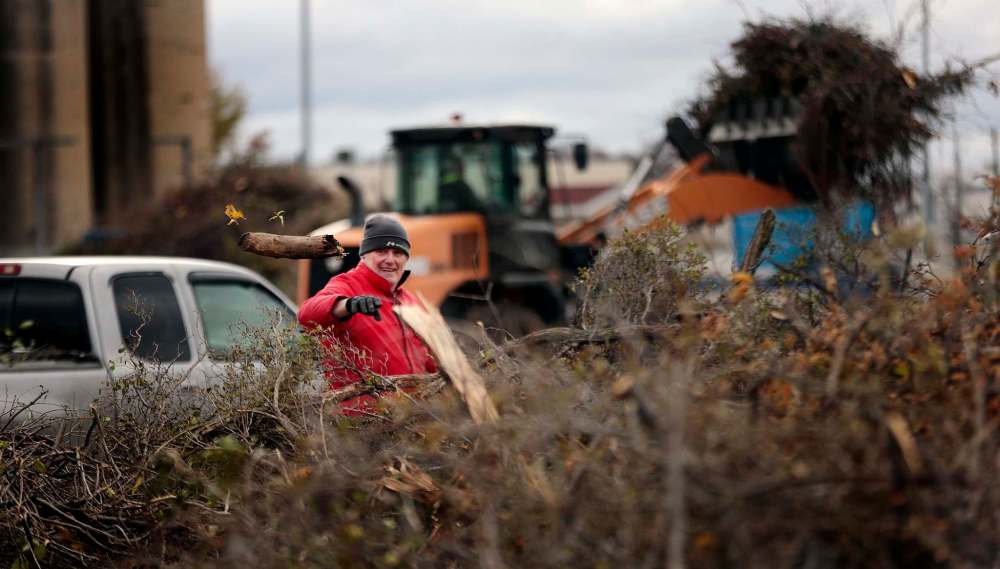
So I asked my experts about what they were hoping would remain once we’d finished grieving.
Buffie wants the city and the province to commit to a 10- or 20-year plan to fund replanting of the trees that were lost and the maintenance of the existing trees.
Hasell wants us to improve the resiliency of our communities so we’re better prepared to face extreme weather events, and Park suggests that we might want to plant wind-firm trees and to diversify the trees we plant.
Watching the storm from a distance, I was convinced that every second tree was going to fall down.
I felt a sick kind of relief when I got home, but I’ve had time to process those feelings now.
I’m committed to helping Winnipeg’s urban forest grow and thrive. And as terrible as the unseasonable storm was, I hope it galvanizes people to plant more trees and to think through the relationship we have with the trees, both as relatives and as green infrastructure.
In the end, the feelings evoked by Snowtober were heavy, just like the snow it dumped on the city.
Ariel Gordon is the author of Treed: Walking in Canada’s Urban Forests.

